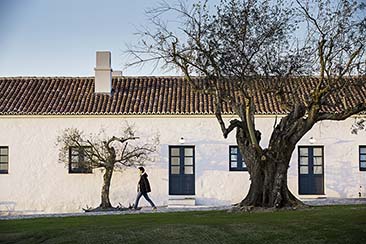You know the Mediterranean. It’s long lingering lunches in an Italian fishing village; sunset parties on the white sands of Ibiza; yachts and the highlife in Sardinia; olive trees and mezze in Greece. It’s pink salt ponds, flamingos and shabby chic wooden houses on stilts? OK: you think you know the Mediterranean.
Those shabby chalets, more than 1,300 of them, and the expansive sands they overlook provided an evocative backdrop for the famous 1986 French drama, Betty Blue (or 37°2 le matin), and Gruissan Plage retains a cinematic feel today, although one that feels distinctly more Californian or Floridian than the Mediterranean you think you know.
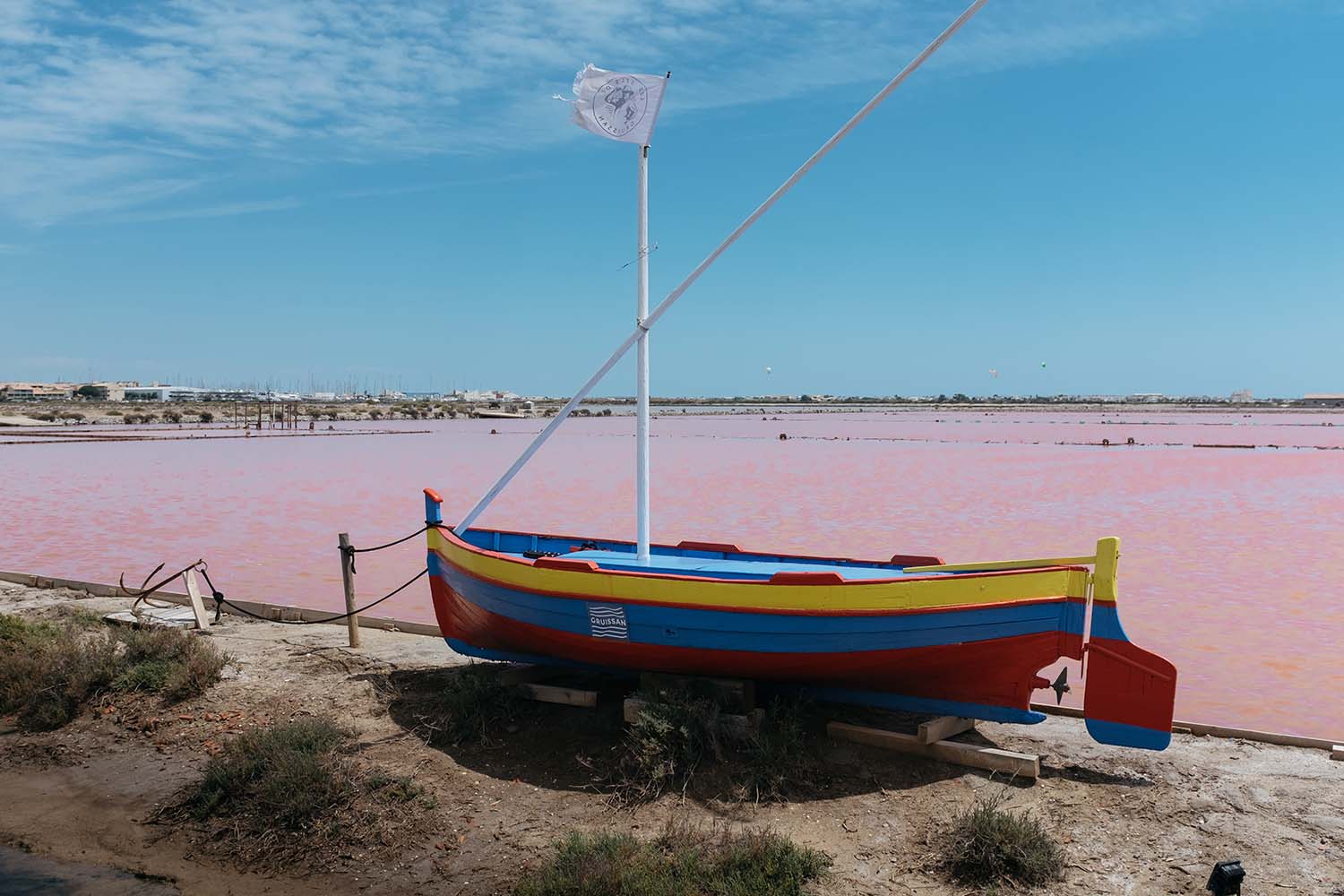
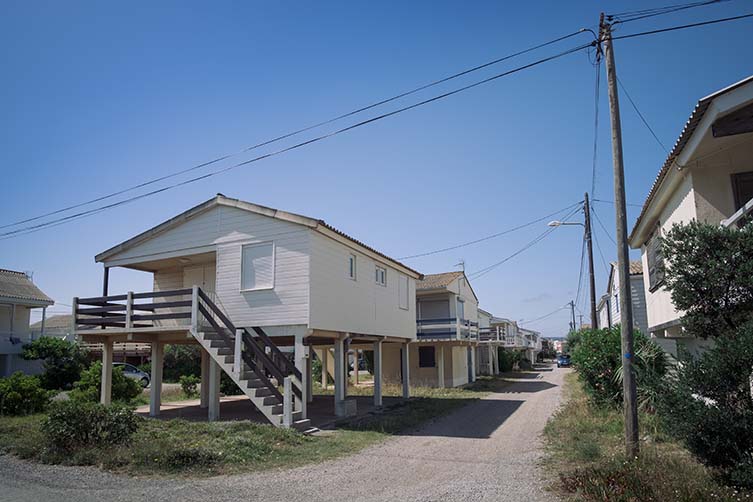
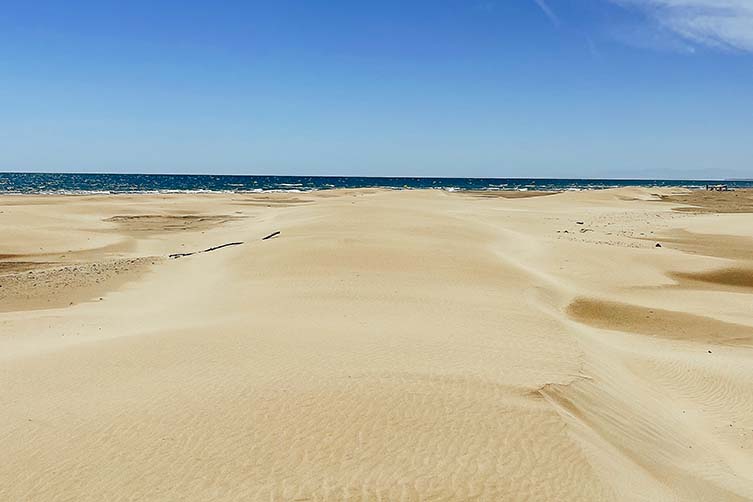
Between the famous Côte d’Azur and the border of Spain, the Languedoc coast is a little-known corner of the Med that is rich in resplendent countryside, lively towns, medieval castles and expansive golden beaches. This is unfiltered and undiluted Mediterranean, somewhere that feels like you’ve discovered it; somewhere unfused about your presence, just going on as it always has done.
Here, within the natural park of the Massif de la Clape, unspoilt wetlands surrounding its white chalk cliffs, lies a vineyard estate with a château converted into a luxury hotel along with lavish villas set across a faux village that blends harmoniously into the landscape. Between the Roman town of Narbonne and the charming Gruissan where those chalets and expansive sands can be found, Château Capitoul offers a surprisingly connected disconnect. Less than three hours by car from Marseille or Barcelona, this part of southern France is an away-from-it-all but close-enough-to-it-all hideaway that evokes the nostalgia of a world pre budget airlines, yet remains perfectly doable.
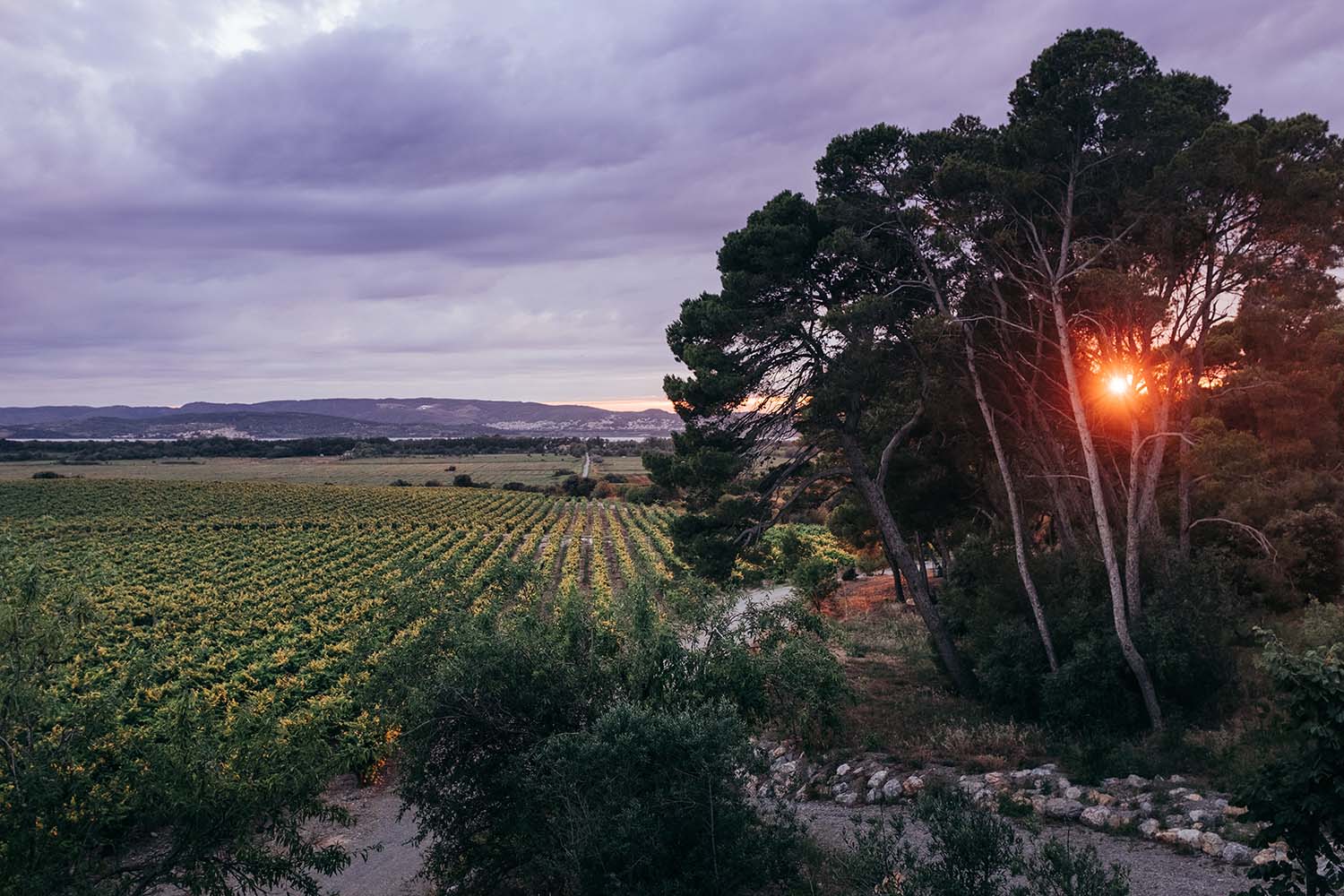
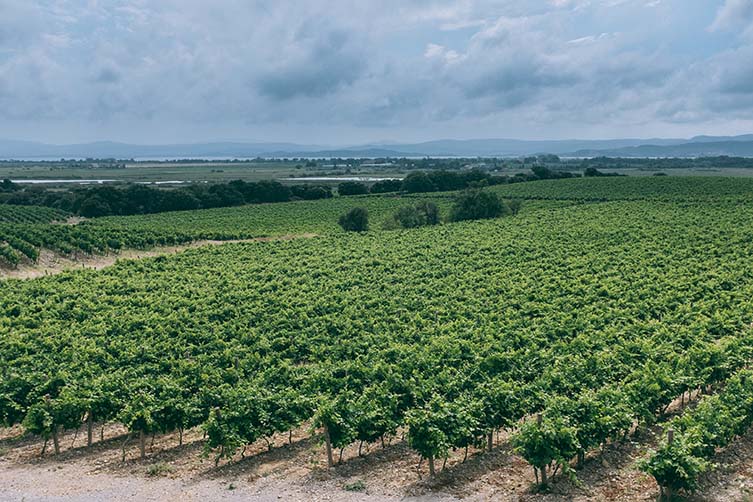
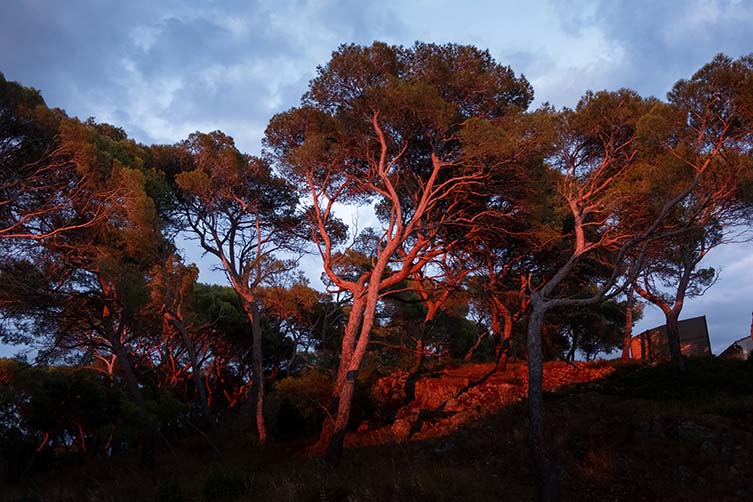
Sister property to the brilliant Château St Pierre de Serjac and Château les Carrasses, Capitoul sits on a hilltop surrounded by 240 acres of vineyards, olive groves and woodland, with views over a flamingo-filled lagoon and beyond to the Pyrenees. Whilst the château houses eight luxury guest rooms, it’s the expansive self-catering villas——of which there are 44——that enable you create a bolthole from which to press pause, inhale, and relish the good things in life.
We arrive early afternoon on a sunny late-June day, the Château coming into view from a picturesque road just past Narbonne. A seamless check-in completed, we’re shown to villa number 40. Entering at ground level, the villa is home to three bedrooms each with ensuite, and a concrete staircase leads to the heart of the property: an open plan living room, dining room and kitchen that open out to a sizeable garden with private swimming pool. Whilst we’re here, let’s talk about those gardens a little.
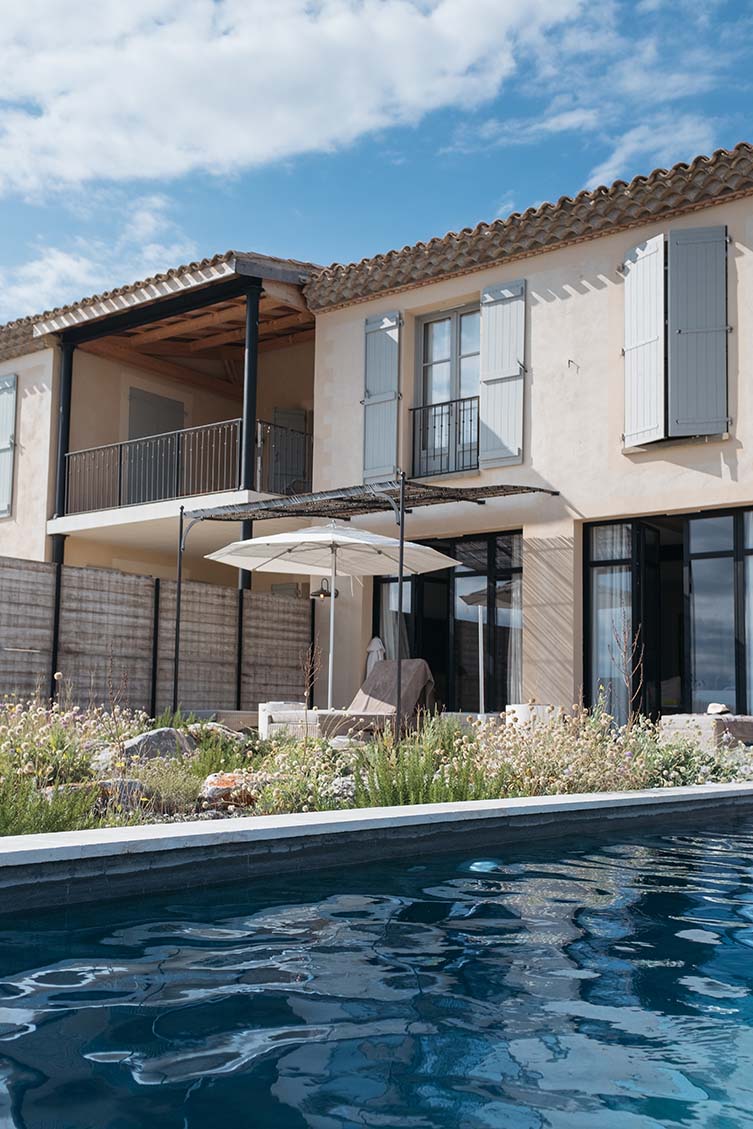
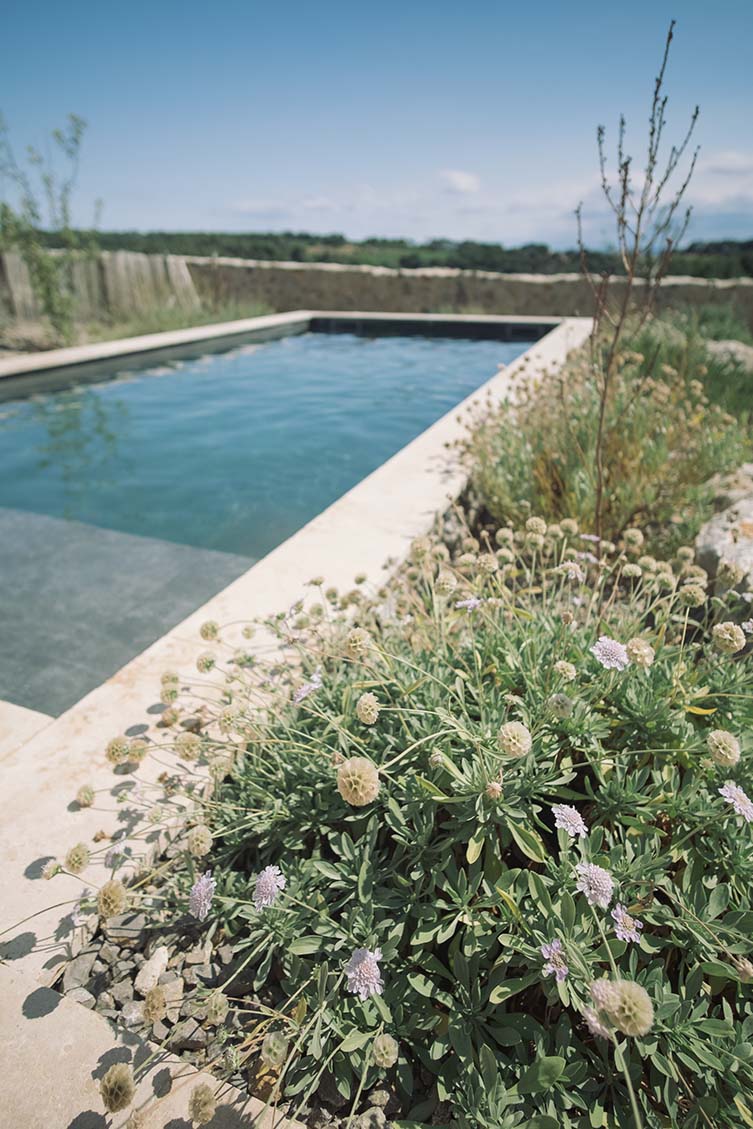
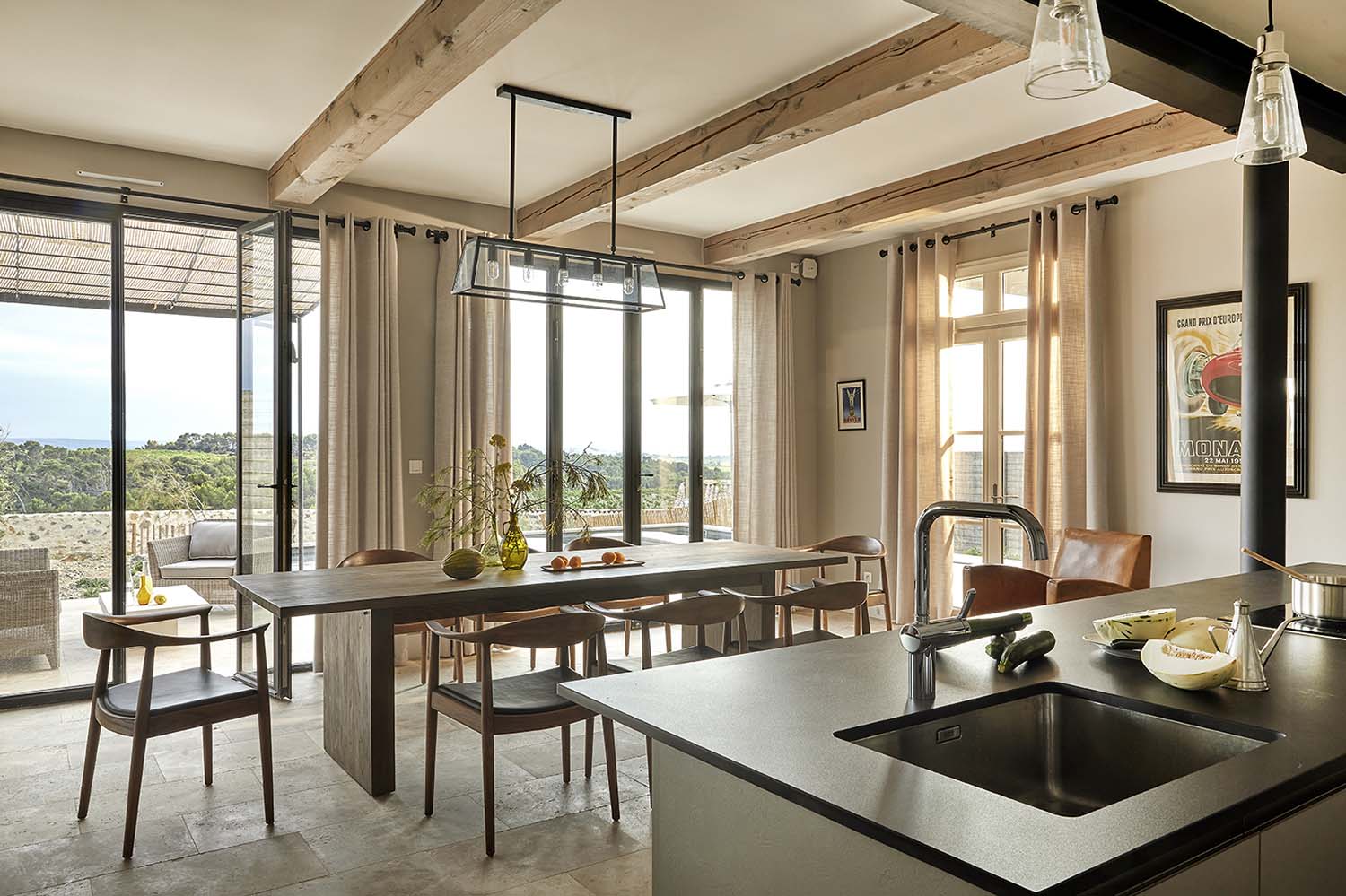
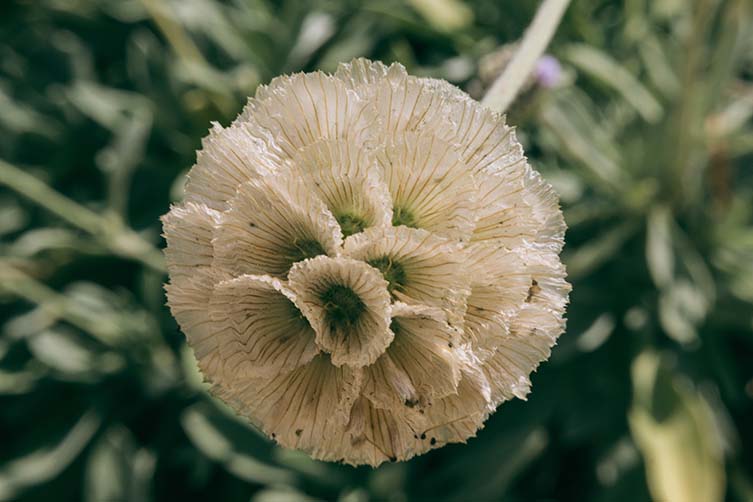
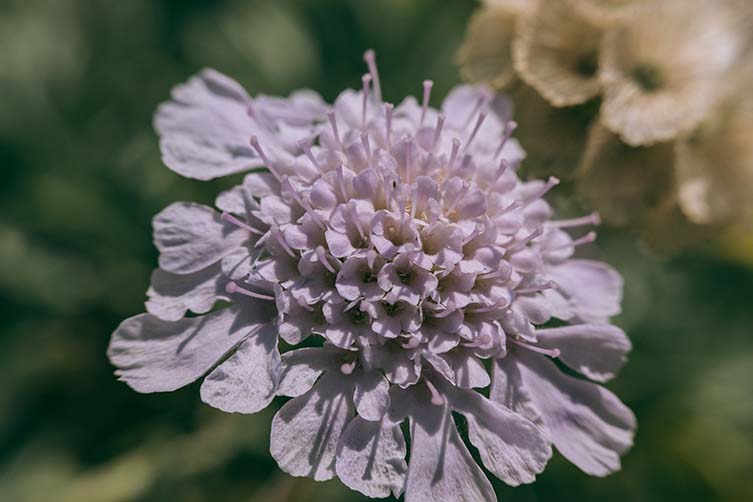
Designed by four-time Chelsea flower show gold medal winner, James Basson, who worked closely with dry garden botanist Olivier Filippi, the gardens and landscaping around the complex feature an array of local flora that is adapted to dry, rocky terrain; capable of prospering without fertilisers or herbicides. And, most importantly, water. Filippi’s ability to select drought and disease-resistant plants fused with Basson’s aesthetic expertise makes for a landscape that is both otherworldly and delicately beautiful. So too is it profoundly sustainable.
Flanked by those inspired dry gardens, our private swimming pool extends to the boundary of our property, where one can take in views of the lagoon and vineyards beyond. Heated May to September, with an electronic retractable cover, it sits just on the edge of utterly refreshing and eternally inviting. It’s almost impossible to pull yourself away.
Floating, basking in the early summer sun, is a chance to take in the authentic design of the villa. Inspired by traditional Languedoc architecture, its hue blending it into the limestone landscape, reclaimed materials married with modern luxury touches and high-end amenities, each villa is an oasis of calm overlooked by the lovingly restored 19th century château.
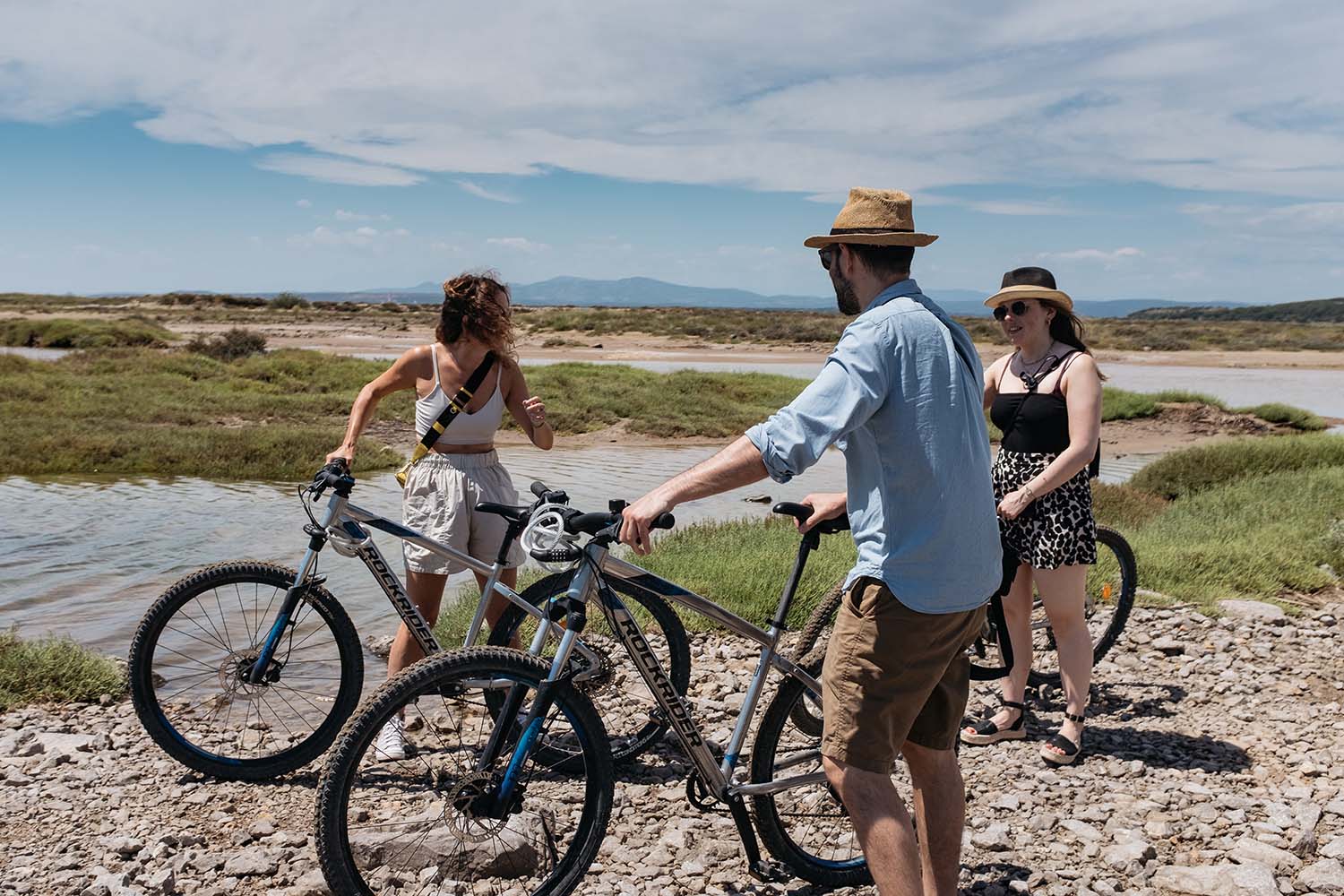
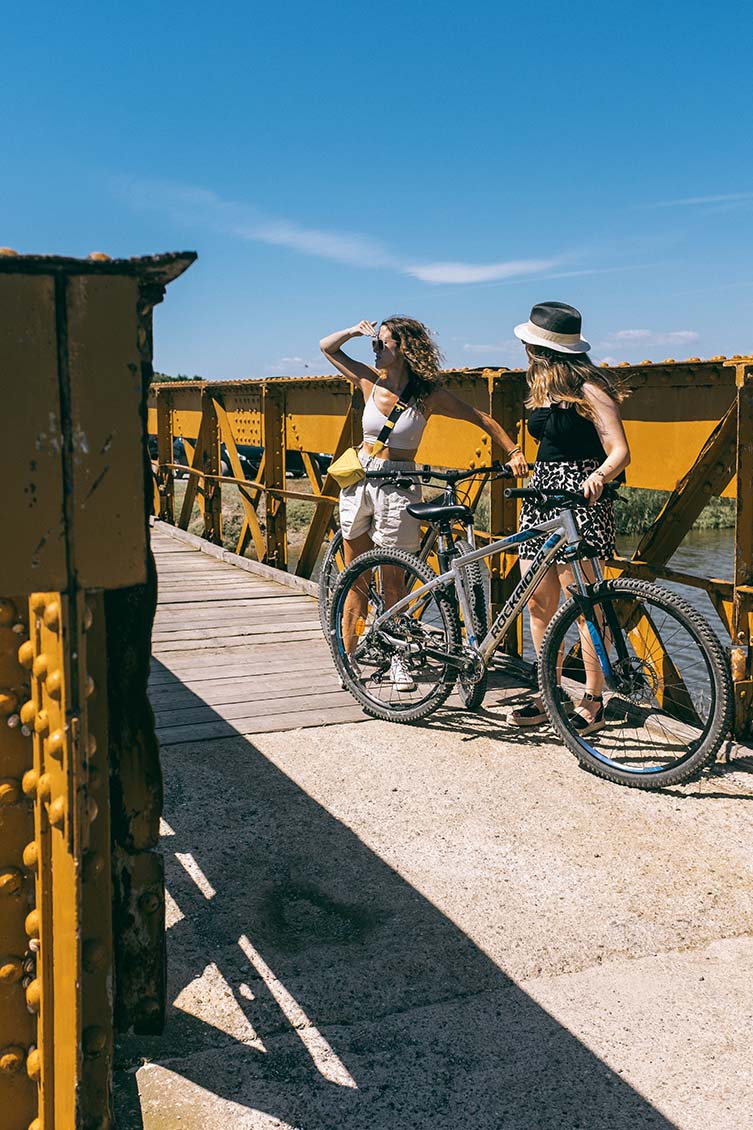
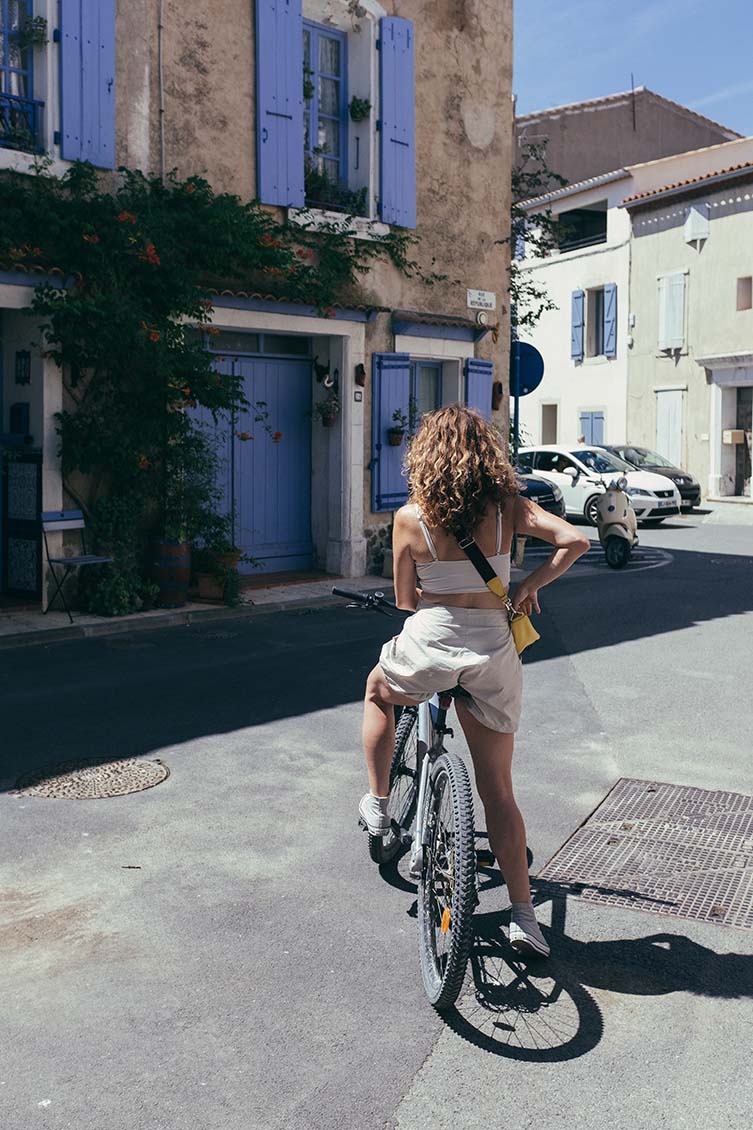
We need to leave it all behind, though. We’ve been informed that, for healthy folk like us (cough), Château Capitoul is surrounded by experiences and activities that cannot be missed. And this is how, armed with courtesy mountain bikes and directed through the estate’s vineyards, that we find ourselves on the former set of one of the most famous French films of all time.
It’s around 30 minutes of cycling to the historic village of Gruissan, where the Barbarossa tower, remains of a 13th century castle, overlooks streets that are one minute sleepy, the next full of life with charming bars and restaurants.
Another ten minutes and you’re in Gruissan Plage with those evocative wooden chalets and al fresco beach bars with bags of character. It’s again laidback and lively at once, difficult to describe as it feels so unlike your perception of this part of the world. But if you like the unfussy fun of Florida’s Gulf Coast, you’ll love it here.
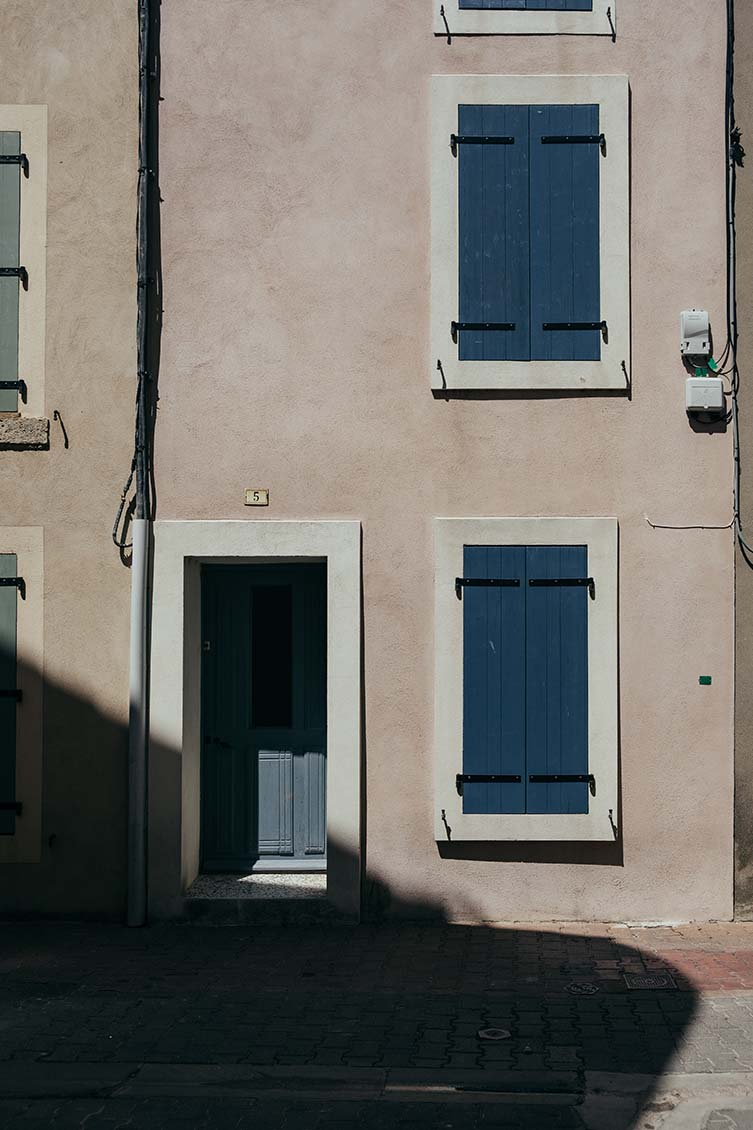
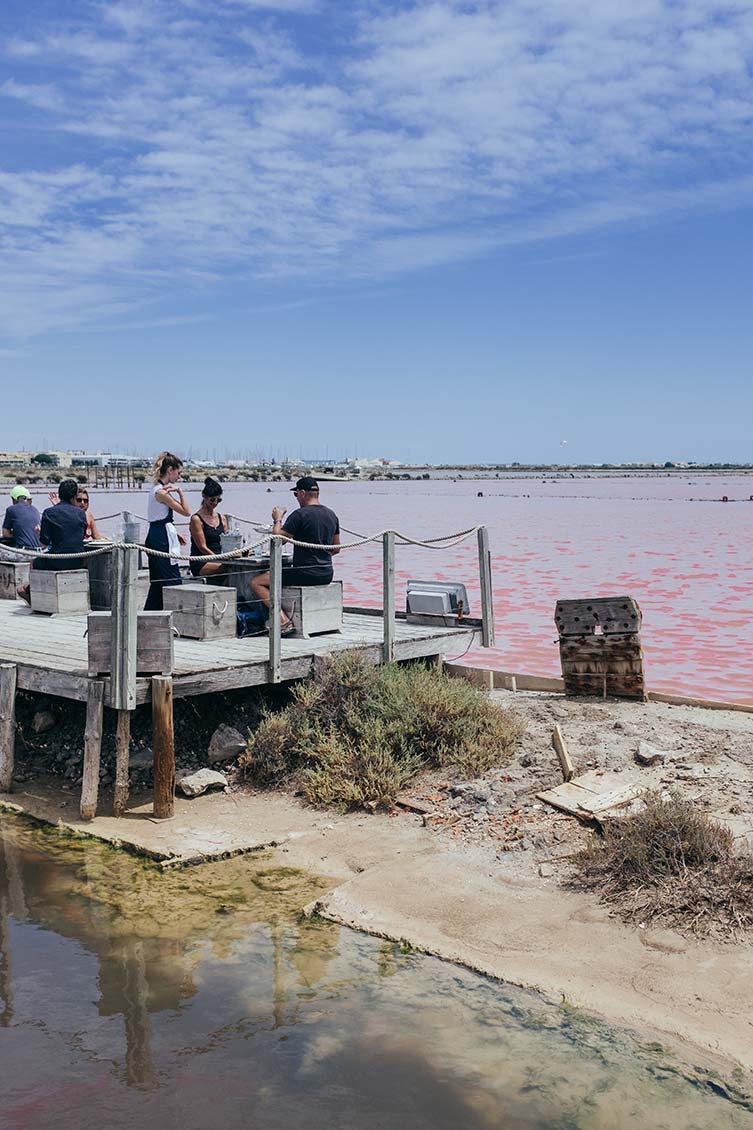
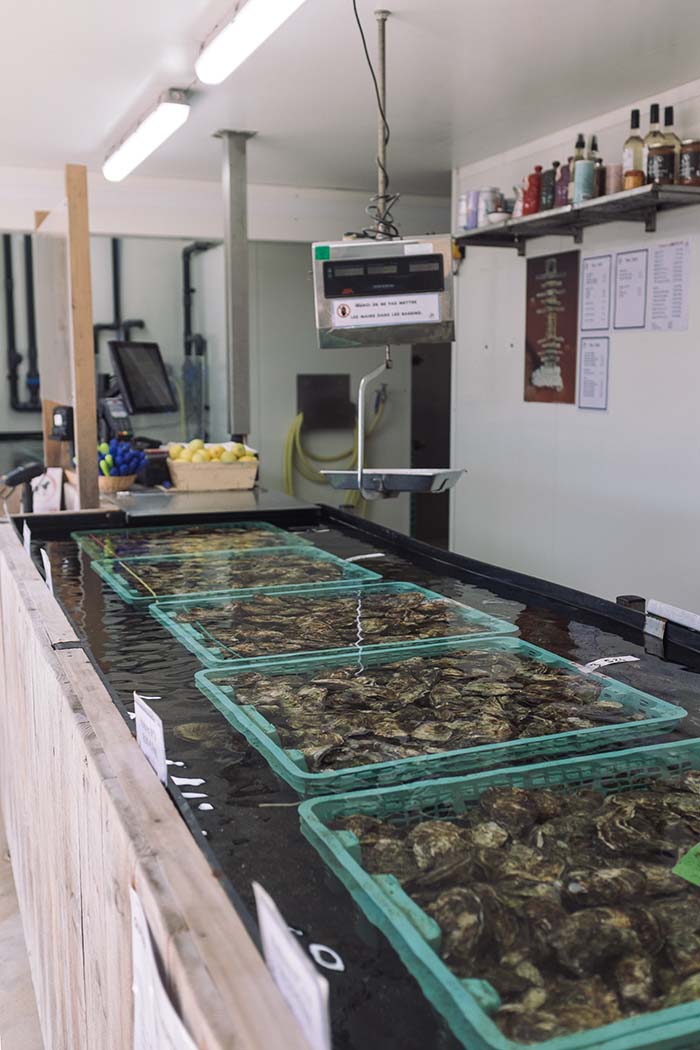
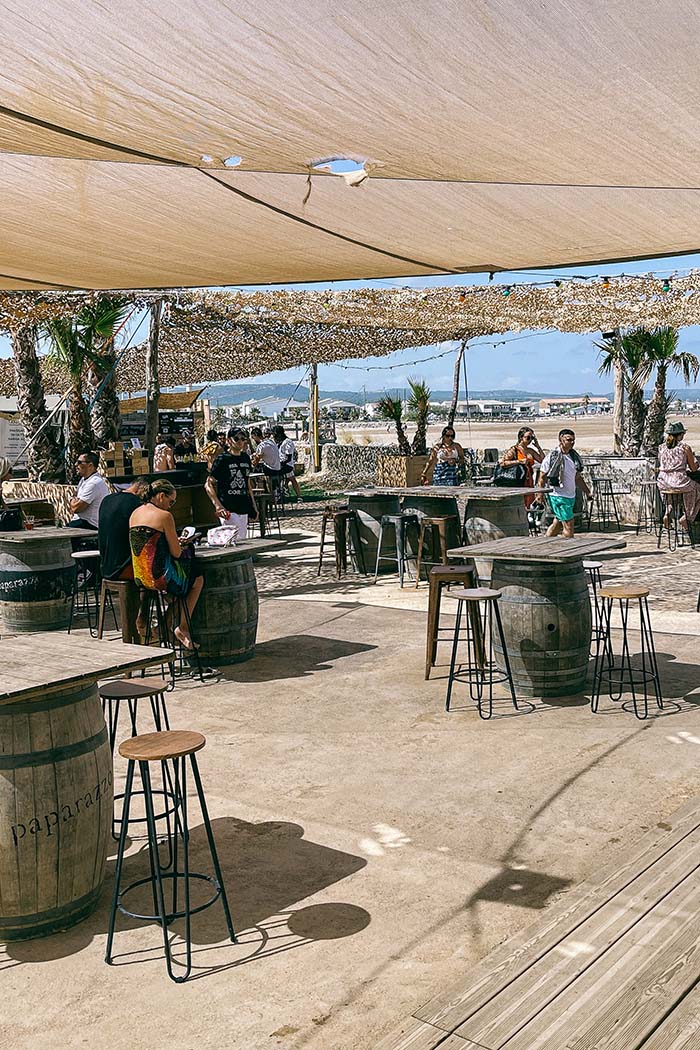
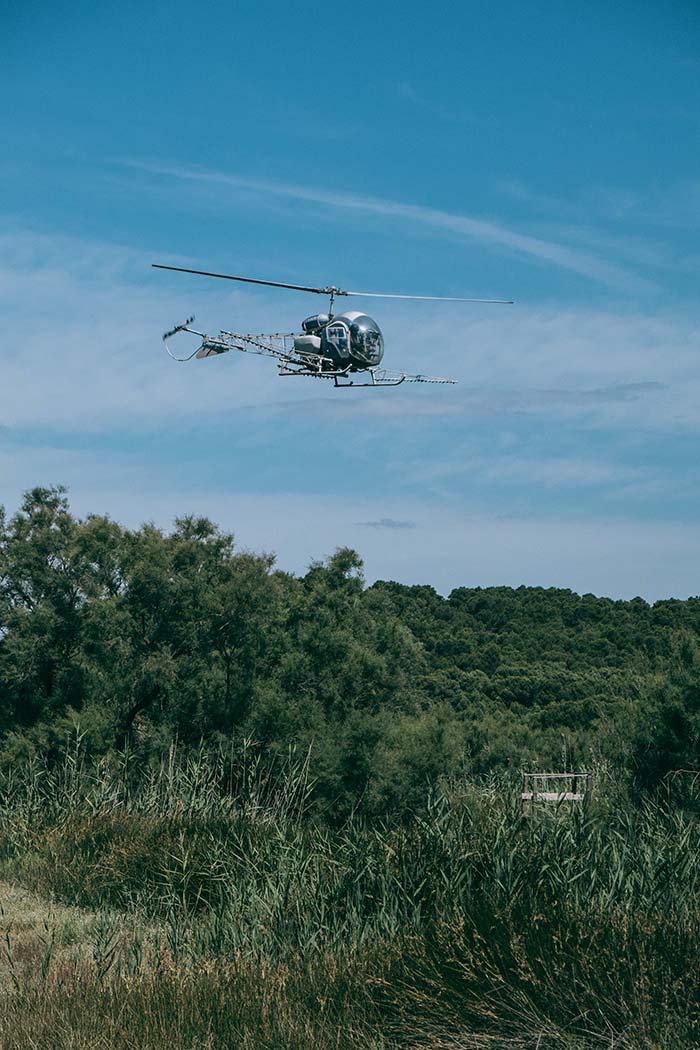
On the other side of an inlet that runs back into the village, and beyond the beauty of Plage de la Vieille Nouvelle’s vast and untouched sand dunes, you’ll find Le Salin de l’Île Saint Martin, a remarkable collection of bright pink salt ponds where sea salt has been harvested for more than 100 years. A restaurant serves up seafood and locally sourced oysters that can also be purchased to take away, whilst a shop and museum complete a wholesome attraction that should not be missed.
Back at the hotel, via an irresistible dip in our pool, it’s dinner time. We settle down on the terrace of Asado, a restaurant dedicated to the art of cooking on open fire. With a huge specialist rig brought up from the Costa Brava, local fish and meats are cooked over vine wood and charcoal.
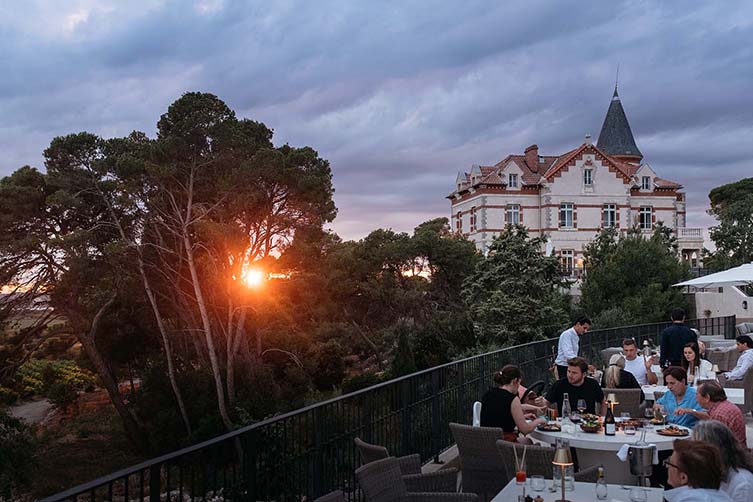
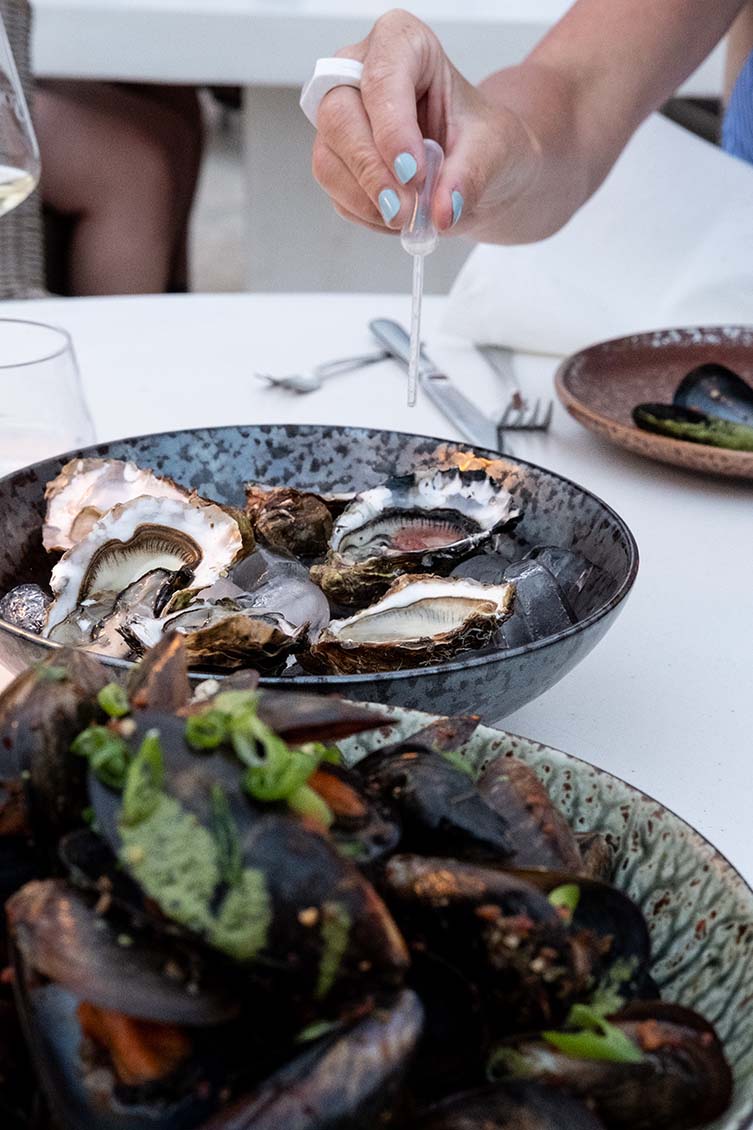
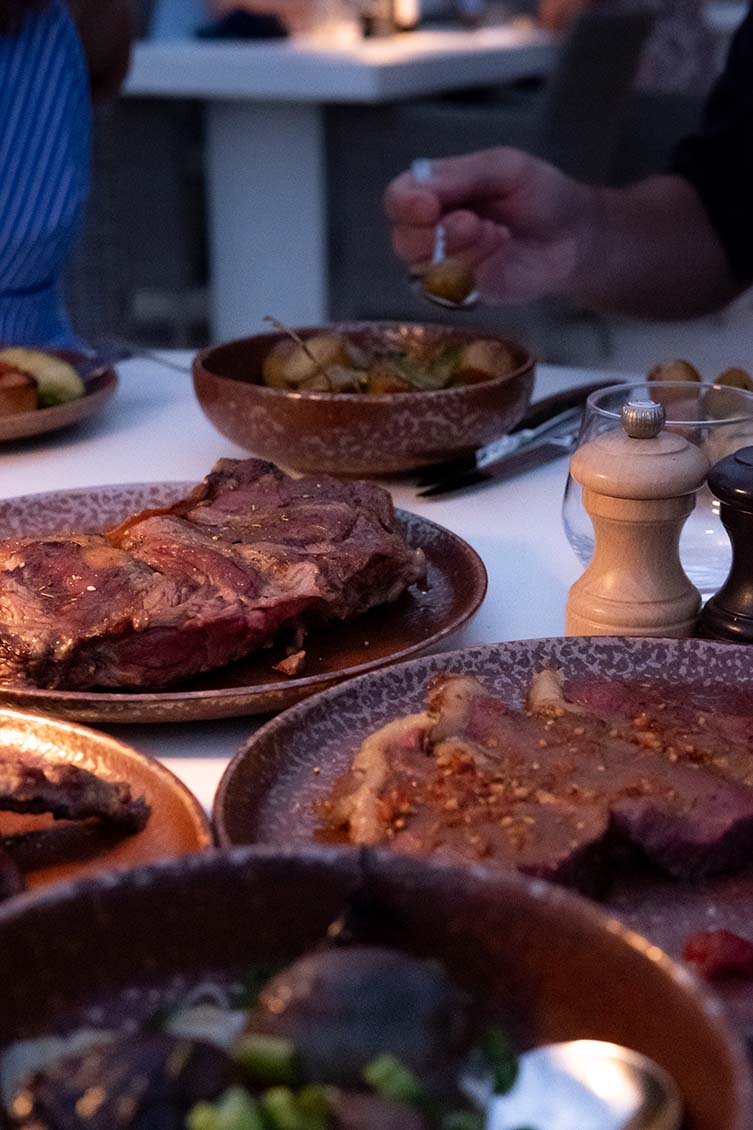
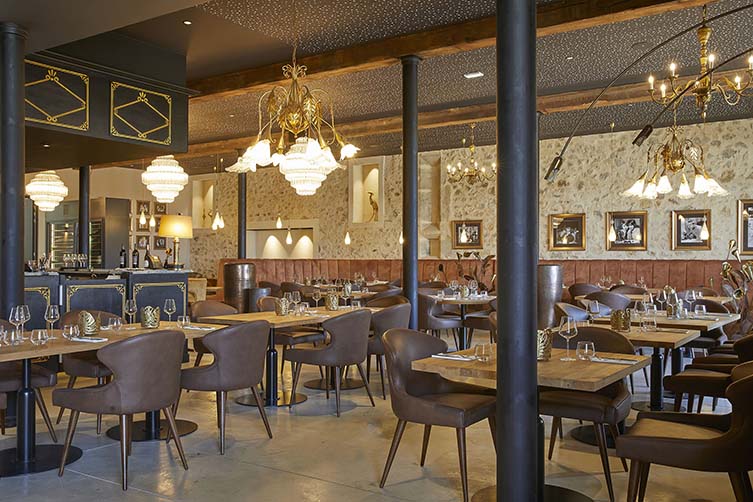
Inside, the design is big and bold and has a cosmopolitan city feel; outside the sizeable terrace looks over the property’s vineyards across the lagoon and to the Pyrenees beyond. It’s perfectly appointed to catch a memorable sunset where the sky burns bright orange behind the silhouette of the 19th century château. We share a selection of steaks, ribs, fresh fish, mussels and exquisite local oysters. It is all quite the decadence.
Some after dinner drinks at our villa and it’s time to sleep deep, hit snooze and repeat. If only all groundhog days could be so utterly blissful. Today we replace cycling with a walk through the vineyards, a tour of the winemaking facilities on site, and tasting. It’s a dirty job but someone’s gotta do it.
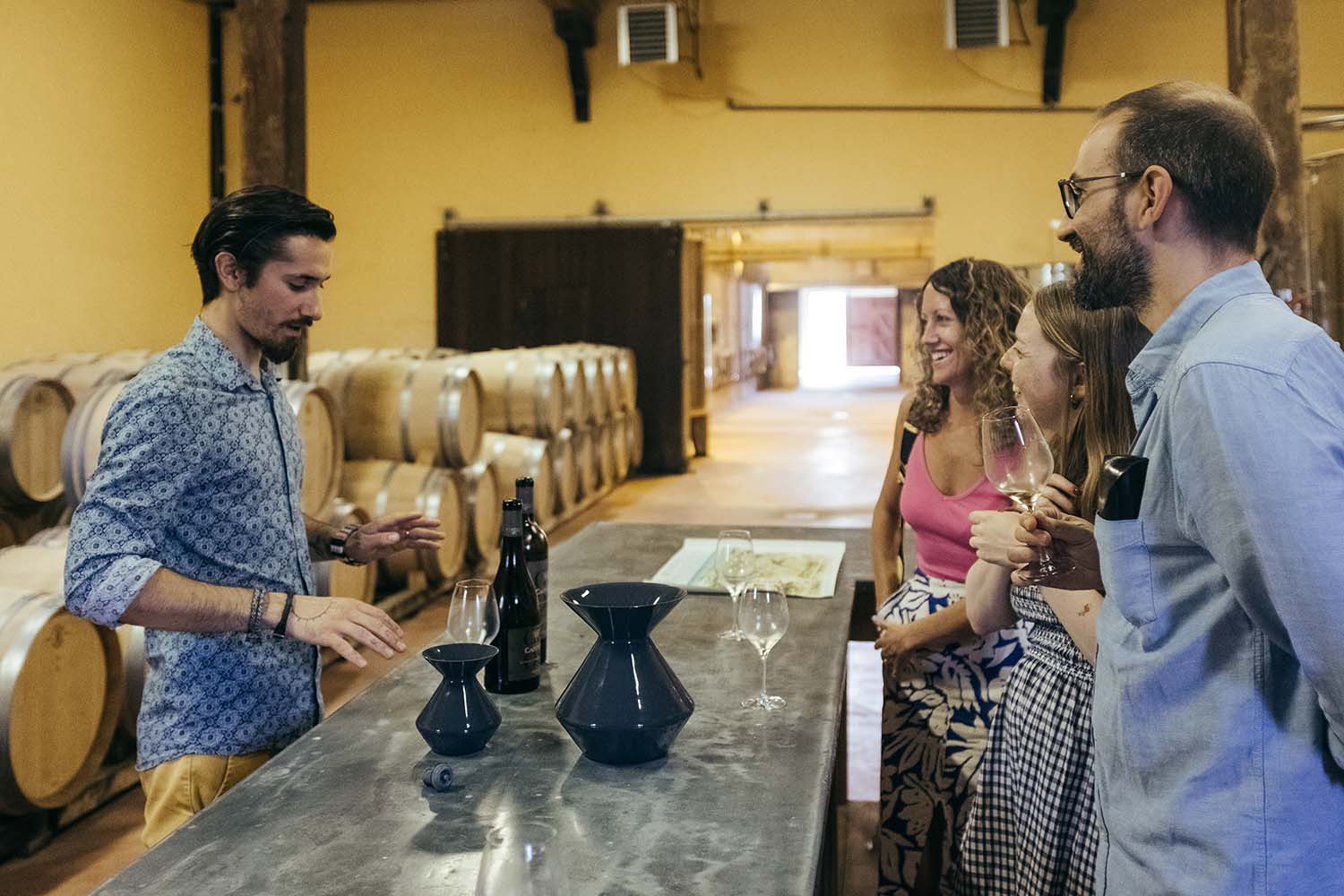
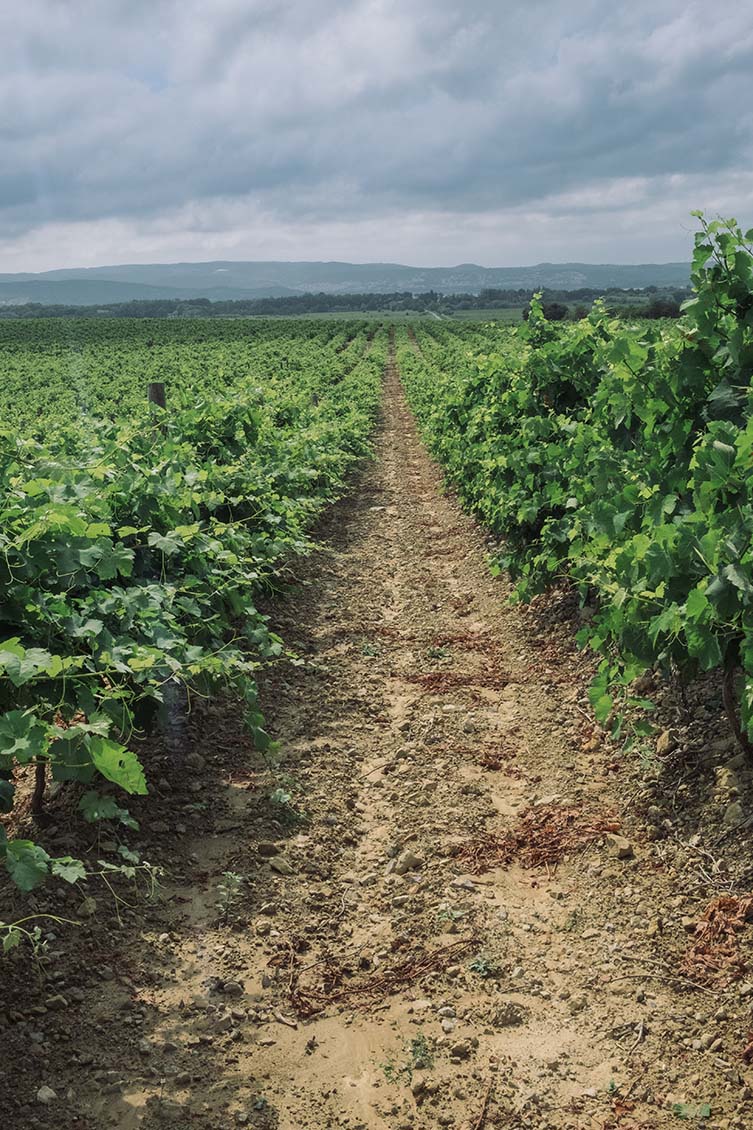
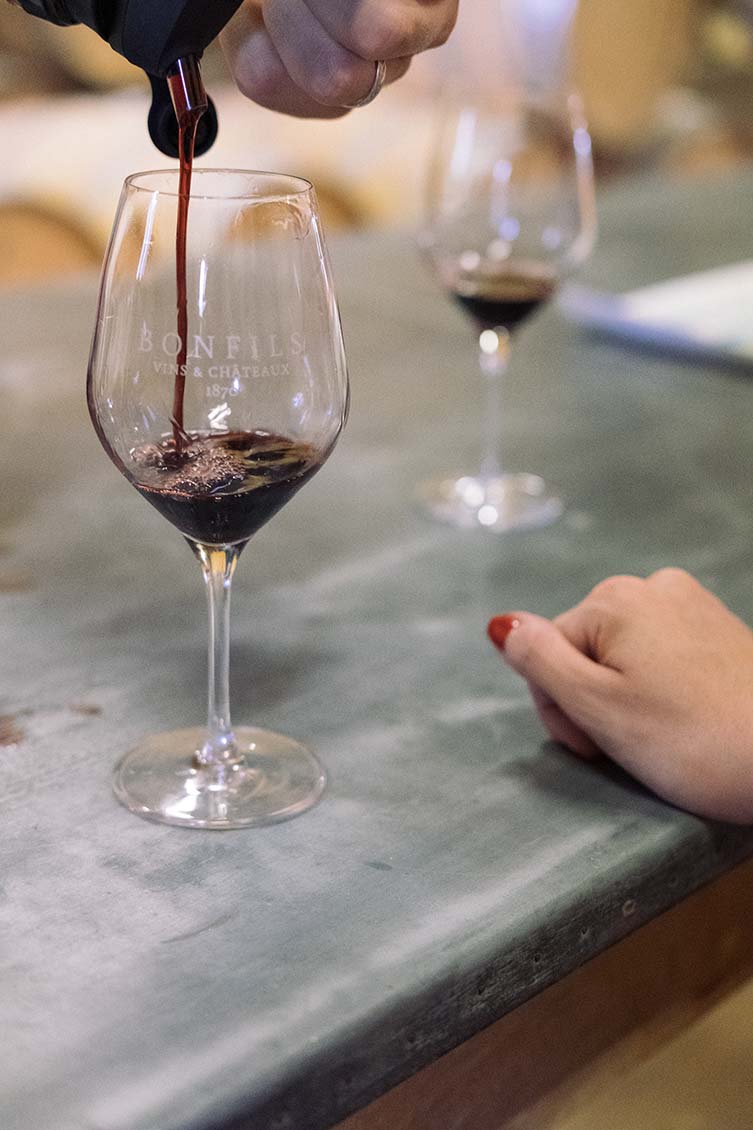
Our guide is informative and friendly, and the wine is seriously good. There’s some 150 years of experience here (although winemaking in this area goes back to the 5th century BC), and the geological diversity of these Mediterranean soils make for interesting variations. Tonight we will cook dinner on the outdoor plancha at our villa, so it would be rude not to take a selection with us.
Whole fish, select cuts of meat and an assortment of starters and accompaniments can be ordered from reception and cooked al fresco on your terrace, and it makes the perfect end to another perfect day. Huge open-plan kitchens make in-villa dining a fine experience, and long casual nights at home with friends are the stuff these dreams are made of. Which is not to say that the epically comfortable beds don’t help a little.
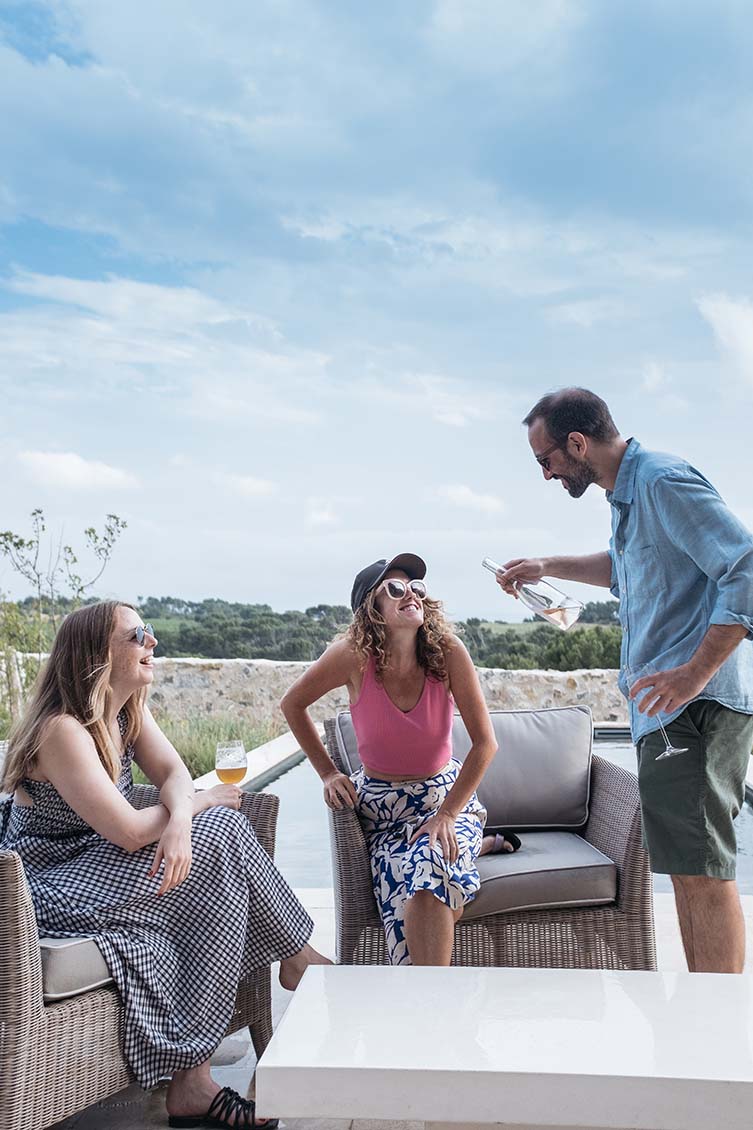
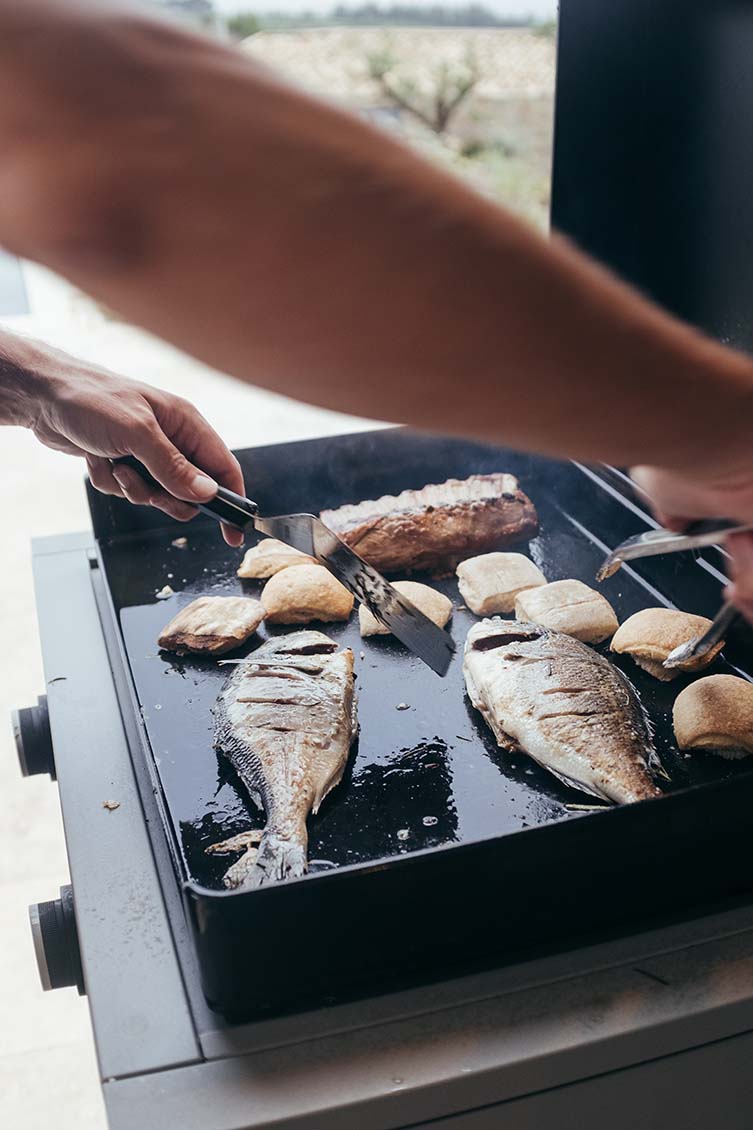
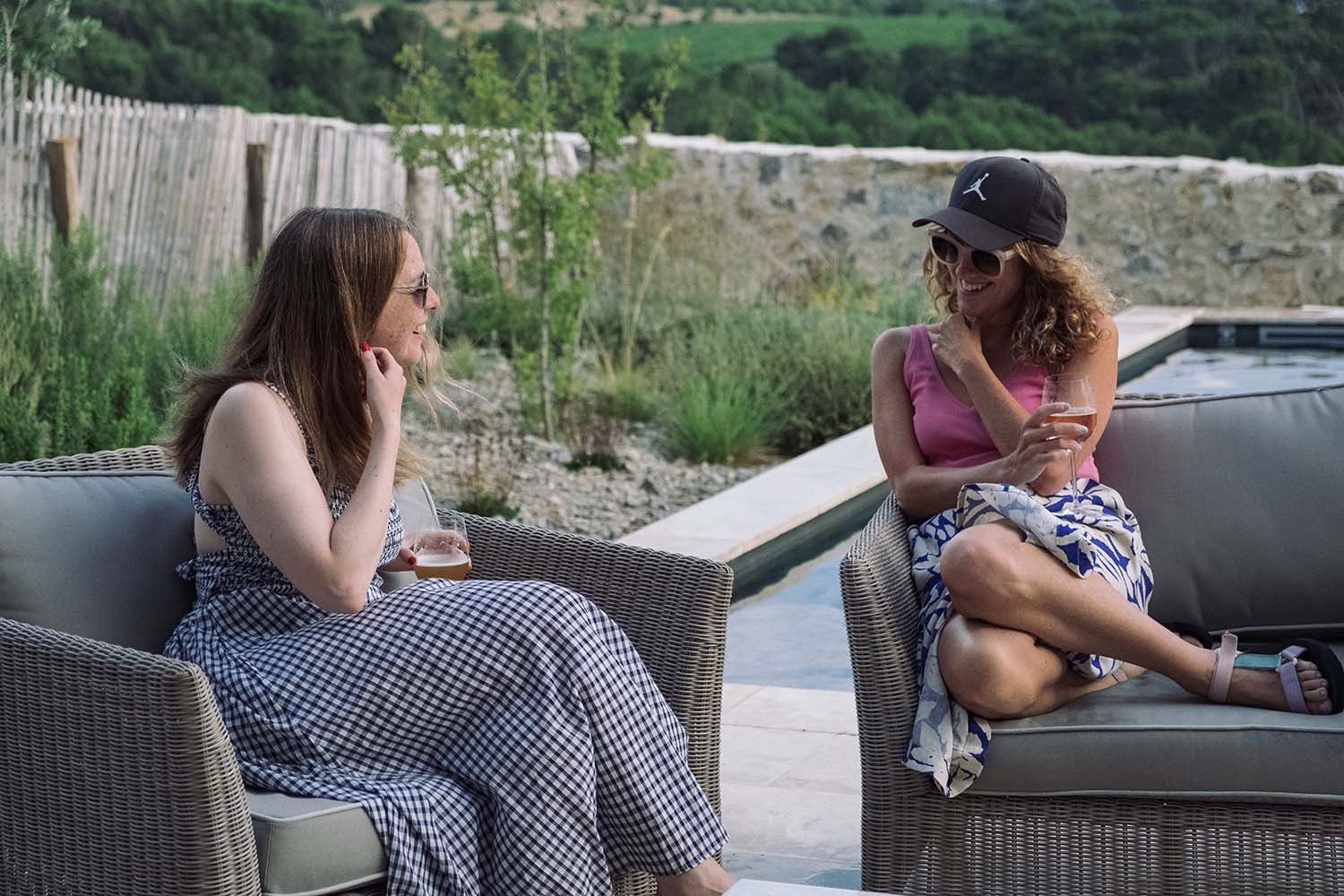
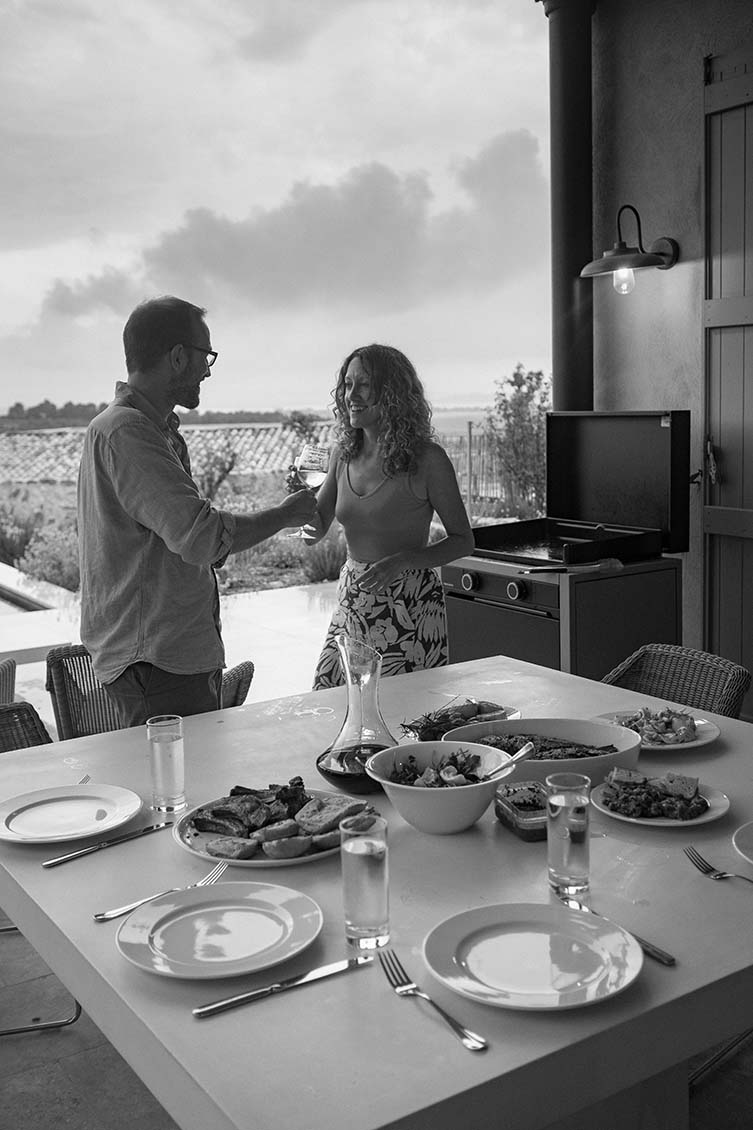
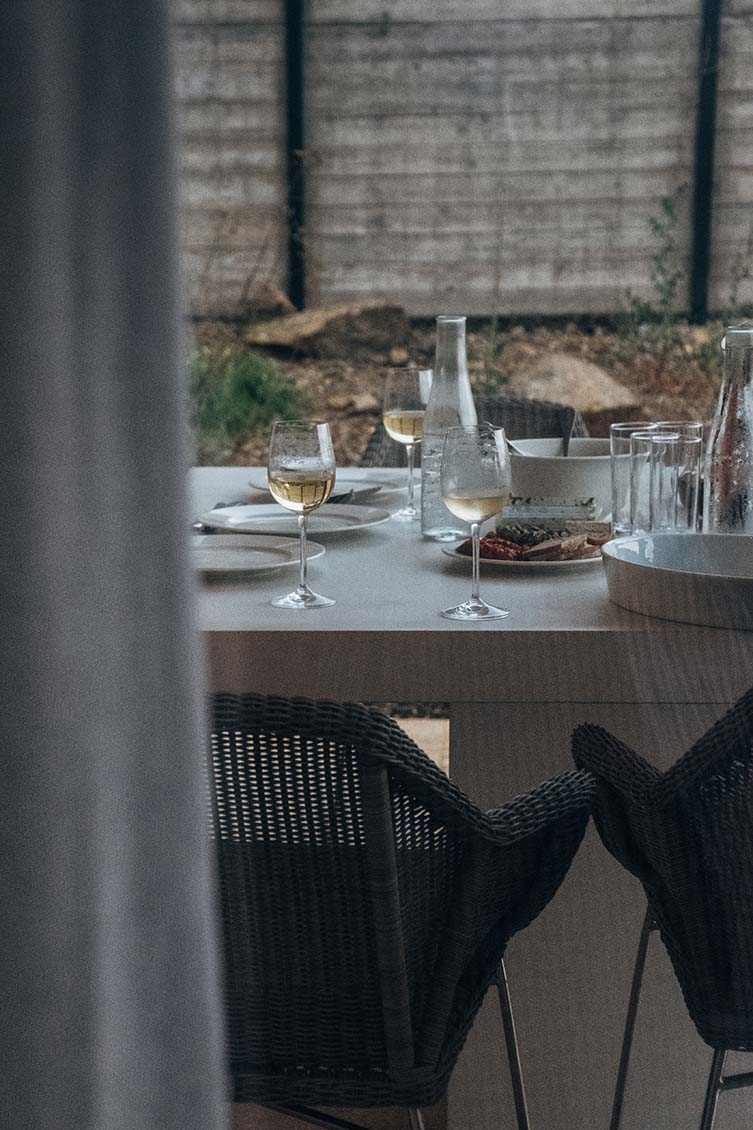
Another night over and it’s almost time to bid adieu to this little corner of heaven, but not before another swim, this time at the main hotel pool. You might think us mad for leaving our private enclave, but this one’s a real corker; a sweeping infinity pool overlooking the vines, lagoon and mountains beyond. Luxury loungers with olive trees for shade, a bar with drink and snacks, crisp clear water and unforgettable vistas. It’s a perfect end to a perfect weekend in this lesser-known part of the Med.
For those in search of discovery, eager for activities, or those who want to let the sands of time pour decadently through their fingers, Château Capitoul is a true marvel. Slow travel, authentic experiences, discovery and disconnection. When you think about the quintessential Mediterranean, the Languedoc coast should no longer be overlooked.
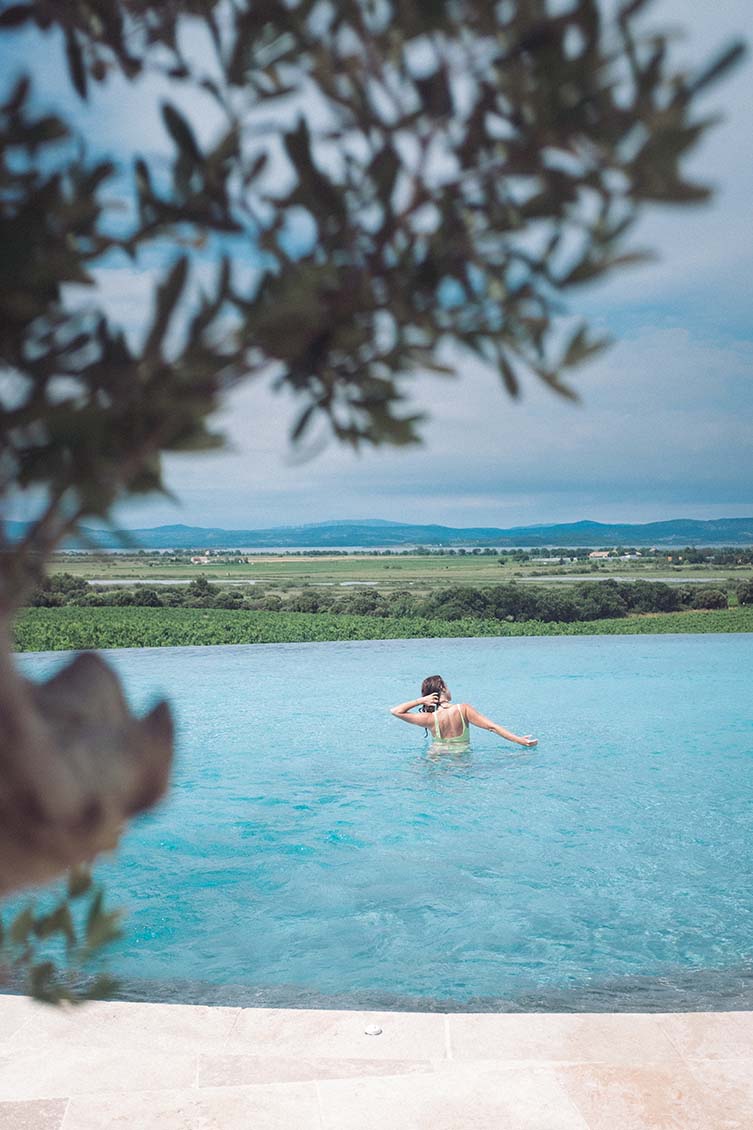
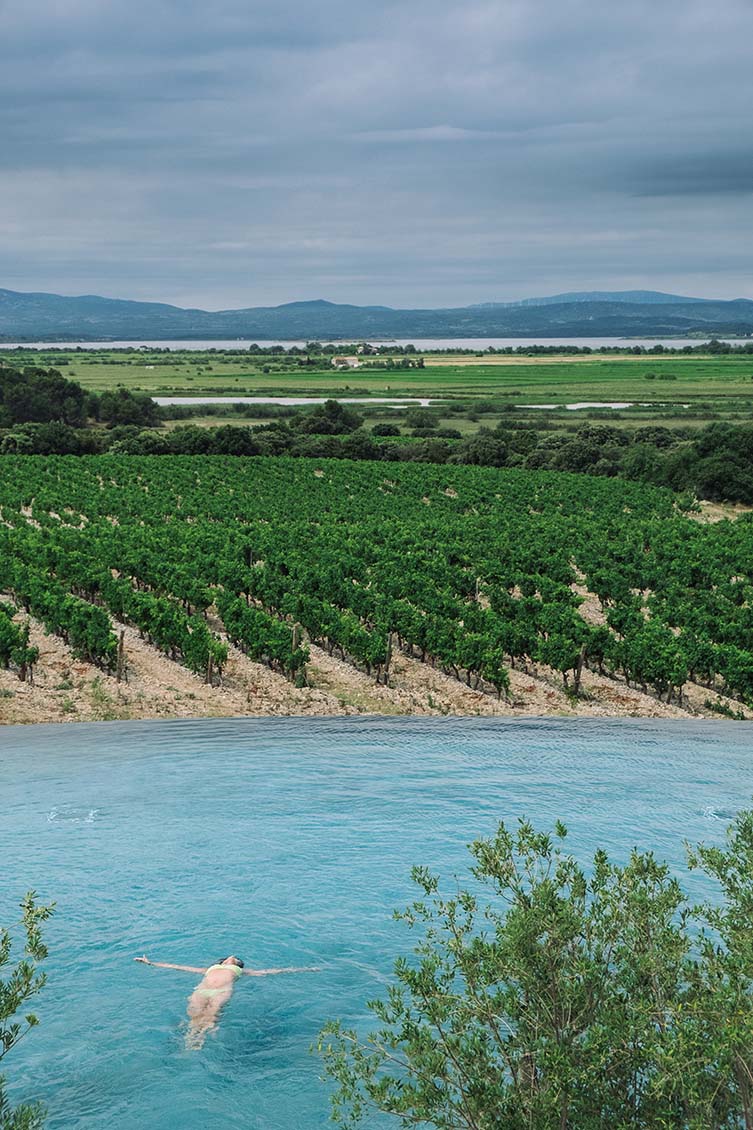
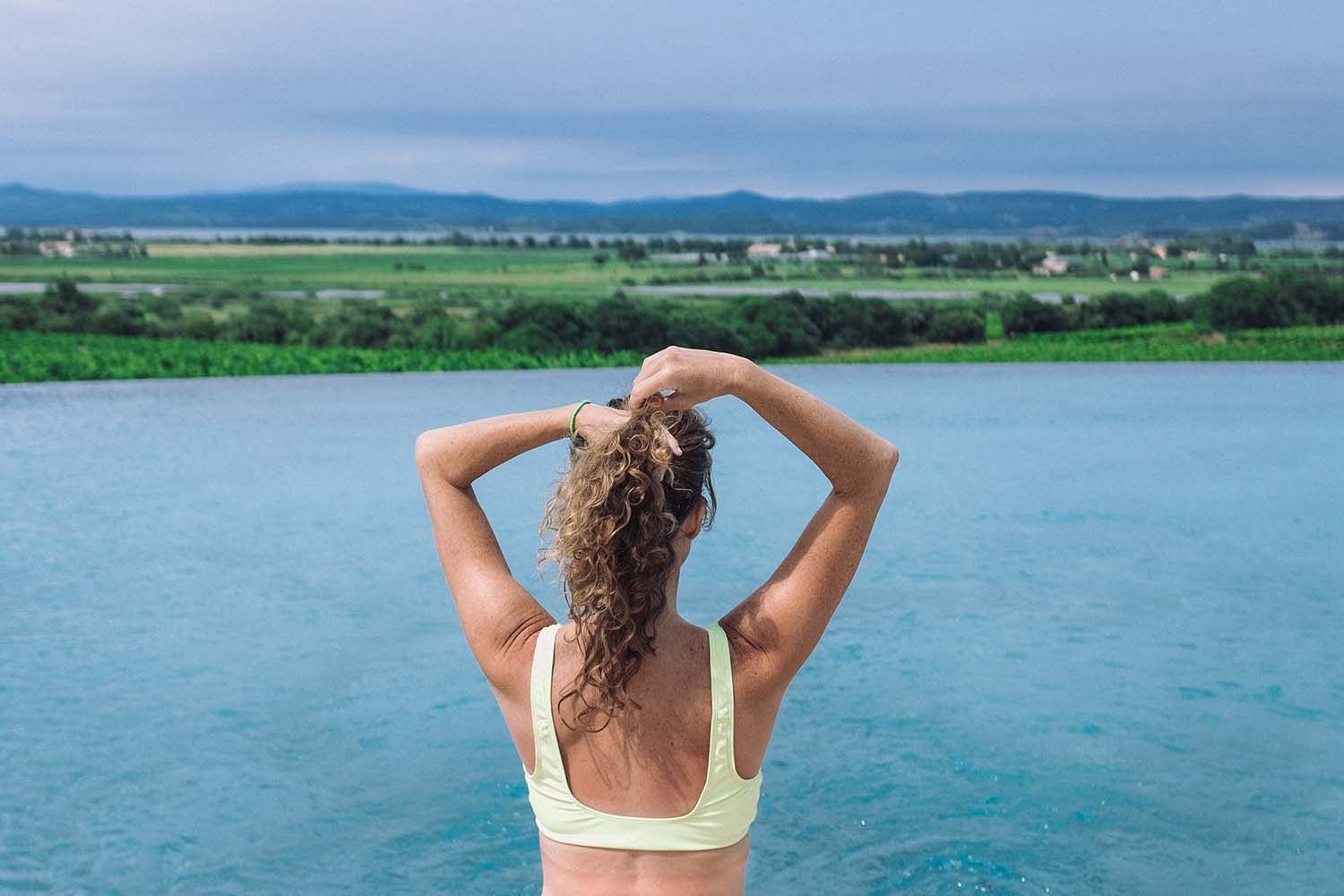
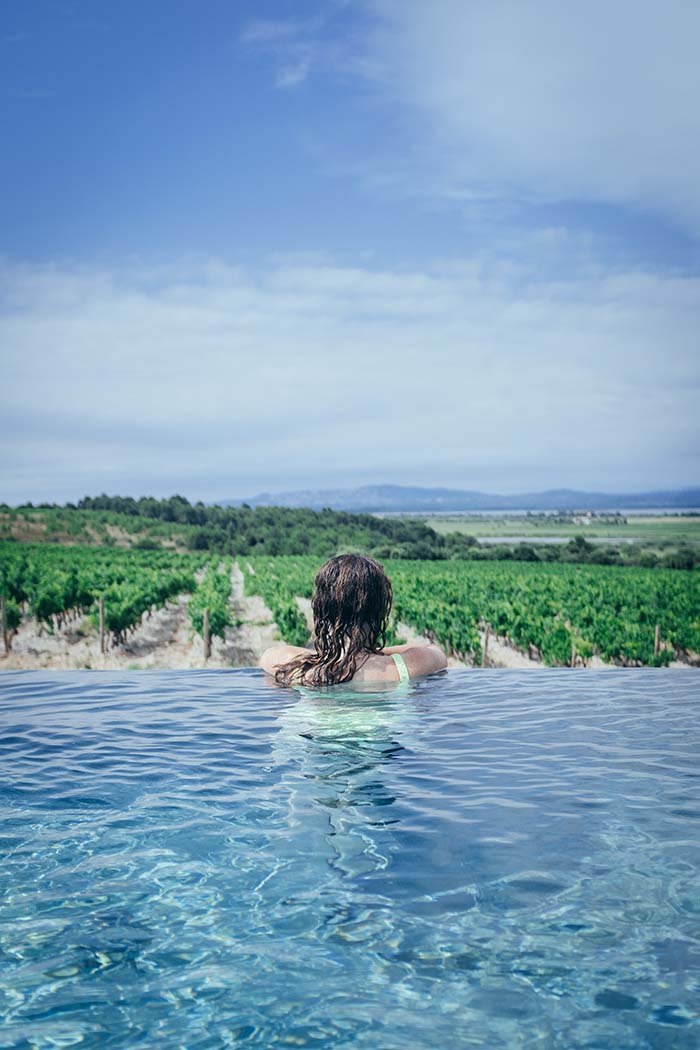
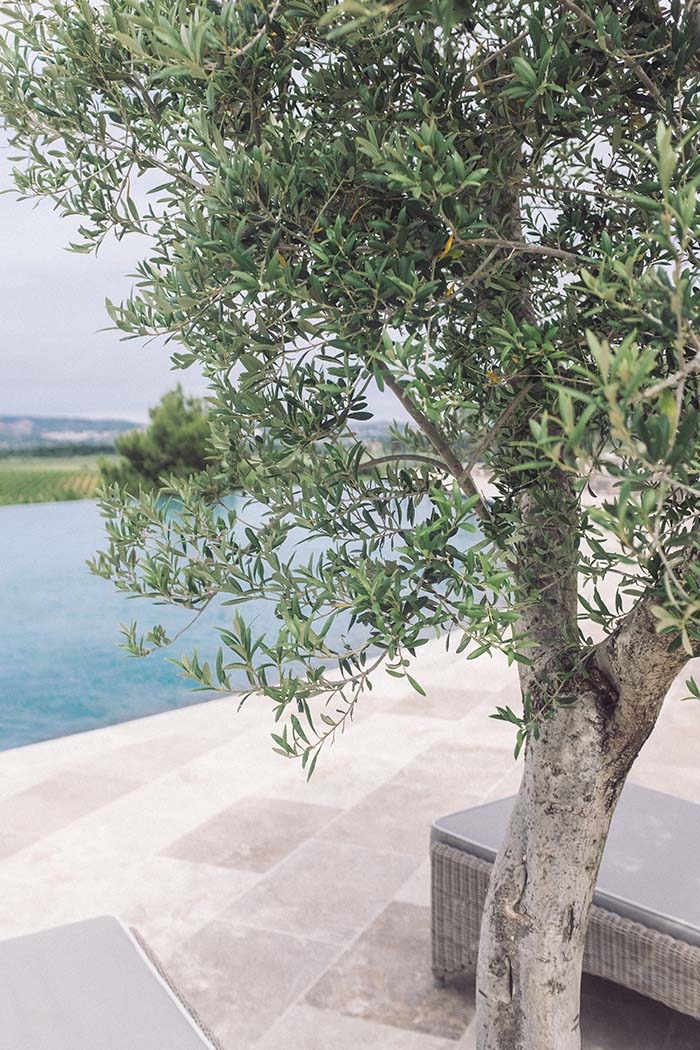
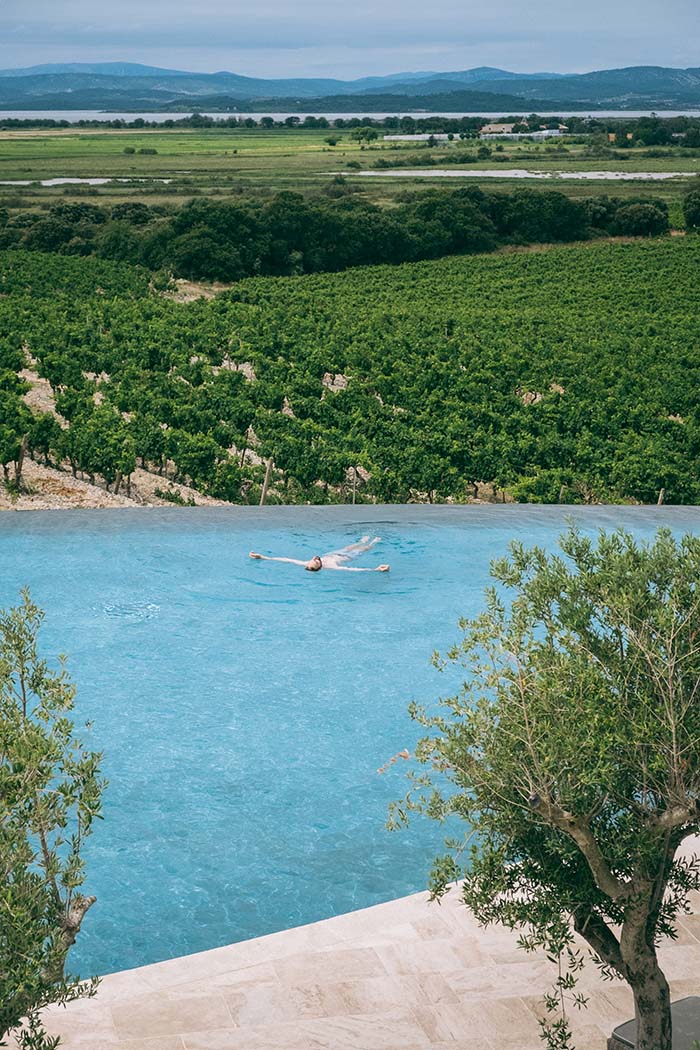
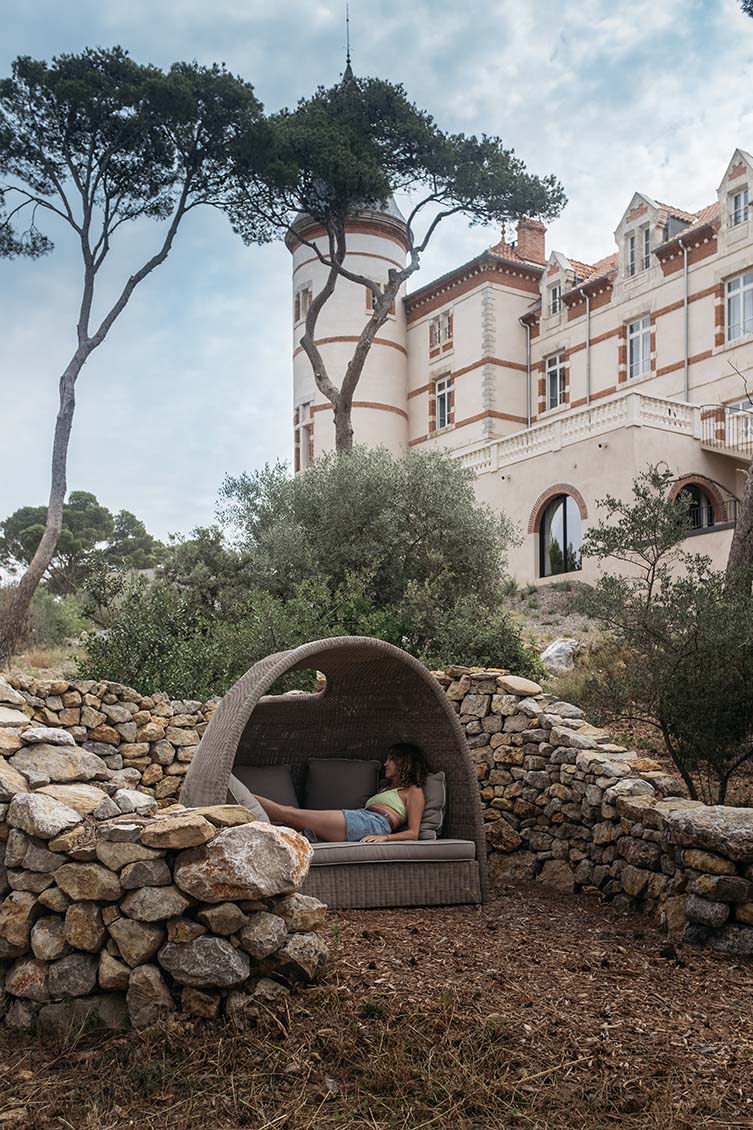
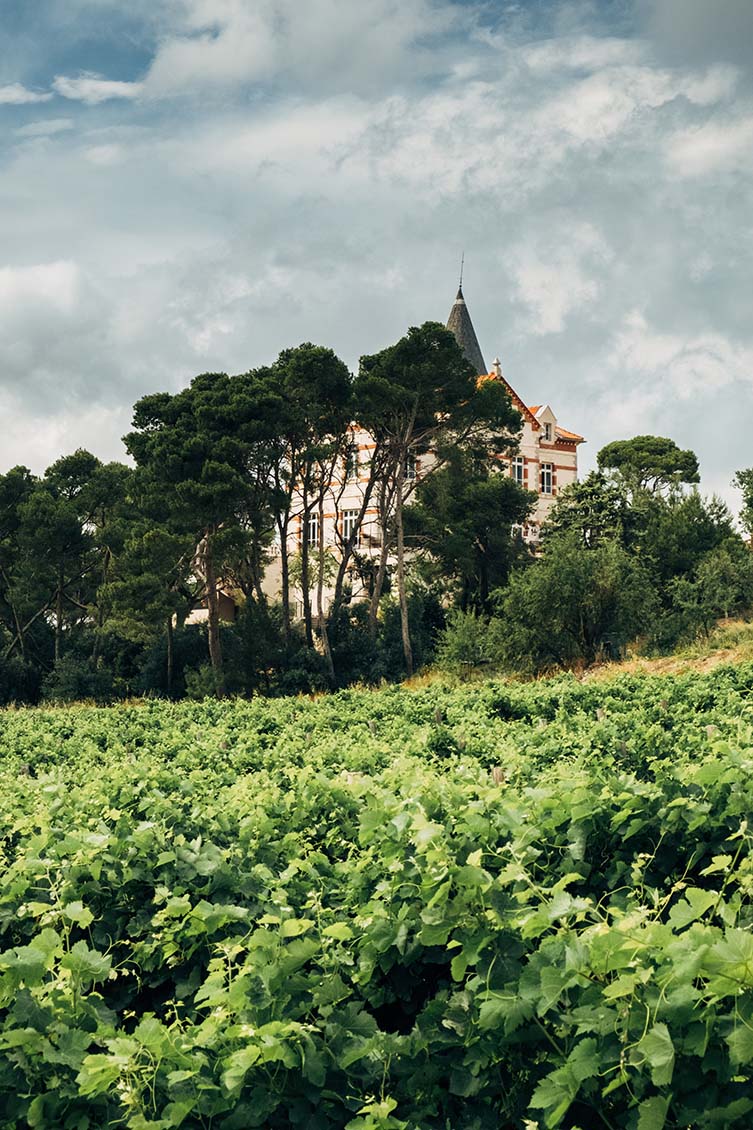
Château Capitoul Photography © We Heart / courtesy, Domaine & Demeure.


